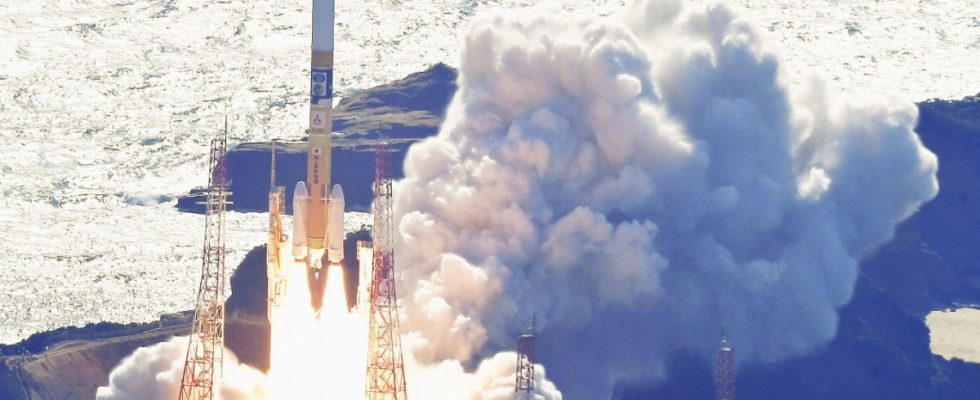As of Friday evening, Japan had succeeded in its planned soft landing of a probe on the moon – but there were problems with the power supply.
The small probe was launched at the beginning of September with the Japanese launch vehicle H2A from the Tanegashima spaceport in the southwest of the country. On board was next to the lunar lander SLIM also called an X-ray telescope XRISMwhich aims to explore the origins of the universe.
On Friday evening German time, experts from Japan’s space agency Jaxa commented on the status of the mission. The landing device is still communicating with the ground station and data is being received, it said. However, the solar panel is not working. It is unclear what the reason is, whether the panel is poorly aligned or there is another problem. The panel is apparently not damaged.
The battery capacity is expected to last for a few hours, the experts said. Further findings can be expected once further data has been evaluated. It cannot yet be said whether the landing took place as planned within a zone of 100 meters.
In April 2023, a private Japanese company attempted to land on the moon but failed. The reason given by the Ispace company at the time was an incorrect altitude calculation of the lander. Landing on the moon remains a major challenge.
SLIM is supposed to collect data on the moon as part of the Artemis-Collect project. With this program, NASA wants to bring people back to the moon and explore it further. The long-term goal is to explore Mars. However, the lunar landing mission Artemis 3 recently pushed back to September 2026.
More than 50 years after the last man walked on the moon, interest in lunar missions is high. Half a dozen are planned for this year. If the information is confirmed, Japan will be the fifth country to achieve a soft landing on the moon, after the former Soviet Union, the USA, China and – just last year – India.

